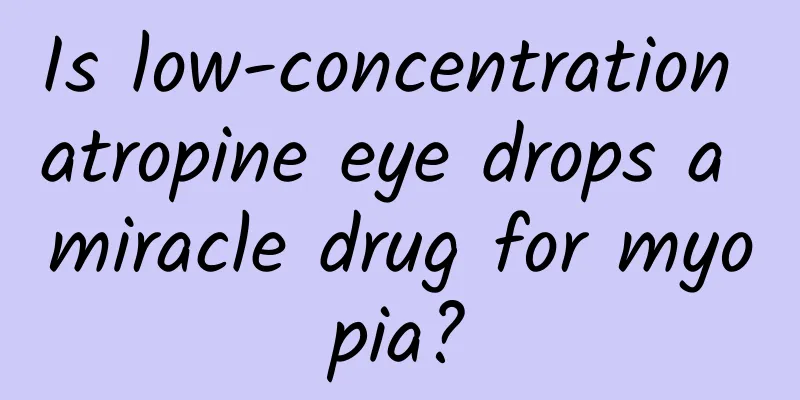How to use cupping to treat gynecological diseases

|
Many women have some gynecological diseases to varying degrees. Some are chronic diseases, such as irregular menstruation. If treated with Western medicine, the results may not be ideal. At this time, the patient can use some methods of traditional Chinese medicine for treatment. Timely treatment can have very good therapeutic effects. So today we will mainly talk about the methods and effects of cupping in treating female gynecological diseases. 1. Thermosensitive moxibustion therapy Thermosensitive moxibustion therapy is a type of moxibustion method that performs concentrated moxibustion on "thermosensitive points", that is, using moxa sticks to moxibustion the "thermosensitive points" on the patient's body surface, stimulating the patient's meridian sensation and promoting the flow of meridian qi to the diseased area, thereby achieving a therapeutic effect. Gynecological indications of thermosensitive moxibustion: Suitable for the treatment of gynecological system diseases, such as infertility, chronic pelvic inflammatory disease, dysmenorrhea, etc. Contraindications: Moxibustion is not allowed on the abdomen of pregnant women. 2. Cupping therapy Cupping is a method of using a cup as a tool and utilizing the negative pressure created by the heat of combustion to allow the cup to adsorb onto the acupuncture points on the skin, causing local congestion and achieving the effects of warming and unblocking the meridians, absorbing toxins and discharging pus, and dispelling wind and cold. Gynecological indications of cupping therapy: suitable for dysmenorrhea, irregular menstruation, etc. Note: Be careful not to catch cold when cupping. Cupping is not suitable in humid seasons. 3. Chinese medicine acupoint application therapy This therapy is a special therapy that uses Chinese medicine to apply acupoints and stimulate the meridian acupoints to achieve the purpose of curing diseases. "The principle of external treatment is the principle of internal treatment", so this method is widely used in clinical practice, and it has the advantages of direct medication route, rapid effect, convenient use, and few side effects. Gynecological indications of Chinese medicine acupoint application therapy: uterine fibroids, dysmenorrhea, pelvic inflammatory disease, etc. Contraindications: pregnant women, blood disorders, cardiovascular and cerebrovascular diseases, fever, etc. 4. Auricular therapy Auricular acupuncture therapy is a method of stimulating the auricle points with acupuncture or other methods to prevent and treat diseases. Pill pressing and needle embedding methods are often used in clinical practice. Gynecological indications of auricular acupuncture therapy: irregular menstruation, perimenopausal syndrome, etc. Note: Pregnant women with habitual miscarriage should avoid injections, etc. 5. Bianstone therapy Bianstone therapy is an external treatment method guided by the basic theories of traditional Chinese medicine, especially the meridian theory. It is a general term for all medical techniques that use stone tools to treat diseases and prevent and maintain health for the human body. Gynecological indications of Bianstone therapy: pelvic inflammatory disease, dysmenorrhea, irregular menstruation, etc. Note: Bianstone therapy also has the effects of weight loss and beauty. Most women suffer from Yin deficiency, and Bianstone therapy is very effective in regulating Yin deficiency constitution. However, Bianstone therapy should not be performed on the abdomen of pregnant women. 6. Abdominal acupuncture therapy Abdominal acupuncture therapy is based on the Shenque Qi-tonifying hypothesis. It studies the abdominal meridians, acupoints and acupuncture methods. It can maximize the potential for self-regulation of the Shenque system and the human meridian system, allowing the internal organs to gradually return to a steady state to treat systemic diseases. Gynecological indications of abdominal acupuncture therapy: suitable for all kinds of gynecological diseases. Contraindications: Not for use during pregnancy. Cupping can treat many physical diseases and has a very good therapeutic effect on some difficult and complicated diseases. As long as the patient can receive effective treatment in time. Then the disease can be treated better. It should be noted that the cupping technique must be excellent to avoid burns or scalds to the person being cupped. |
<<: What are the contraindications of taking Chinese medicine for regulating menstruation?
>>: What position is more likely to conceive?
Recommend
How to check fetal hearing during pregnancy
The development of the fetus is an issue that man...
How to adjust diet for thick endometrium?
Endometrial thickening is a common gynecological ...
Why do babies have good skin? How do adults take care of their skin?
In our lives, sometimes in some shopping malls yo...
How many days after menstruation is it easier to get pregnant?
Sisters all know that normal women of childbearin...
What are the examination items for the three months of pregnancy
Various examinations are needed during pregnancy....
How to treat mild pelvic inflammatory disease?
Pelvic inflammatory disease is a particularly com...
How to treat endometriosis
The uterus is the place where women give birth to...
How are bra sizes determined? Girls, come and study.
Little girls will start wearing bras as they grow...
Watery vaginal discharge after menstruation
Paying attention to women's health is not jus...
What causes vaginal burning sensation
The female vagina is the "portal" of th...
Can science explain the legend of “turning hair white overnight”?
Many people have seen the scene of "turning ...
Symptoms of kidney yin deficiency in pregnant women
During pregnancy, women's body functions will...
Why are there so few peaches planted? How can we preserve peaches for a longer time?
In normal times, people eat relatively few peache...
What is the disease of female leucorrhea with blood streaks
Leucorrhea is a normal secretion in the female va...









